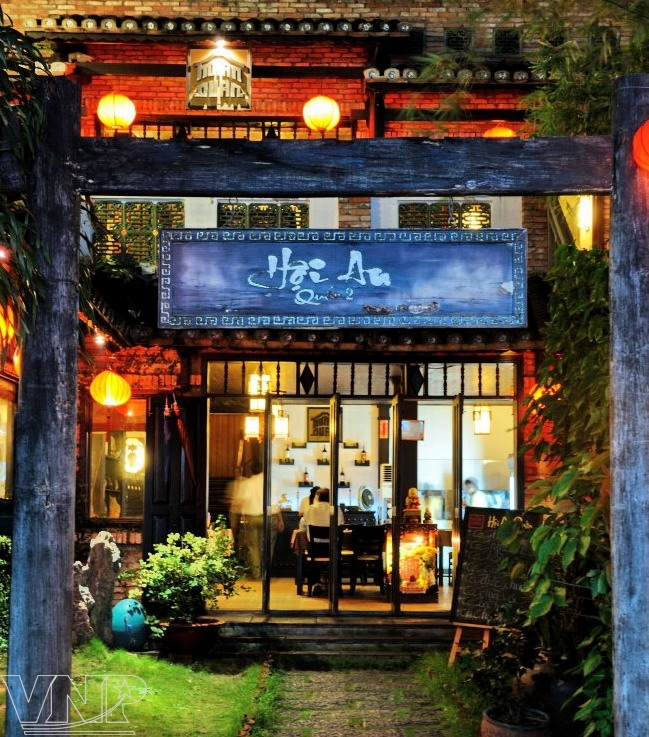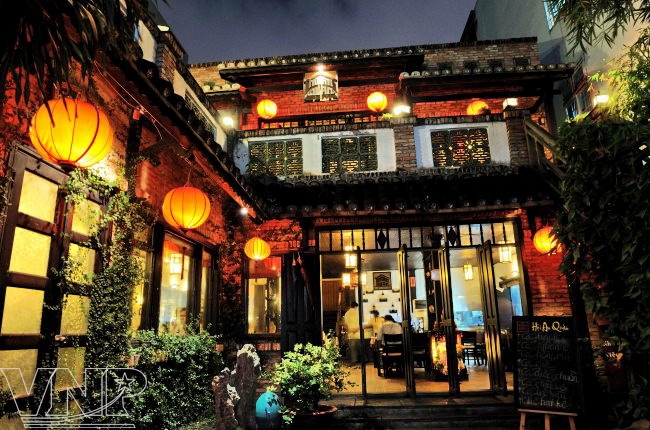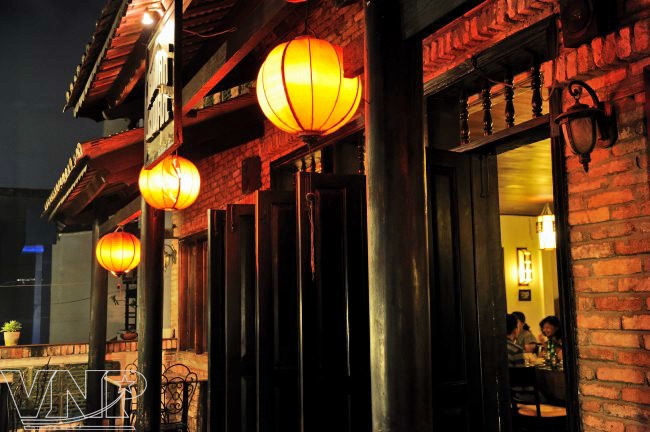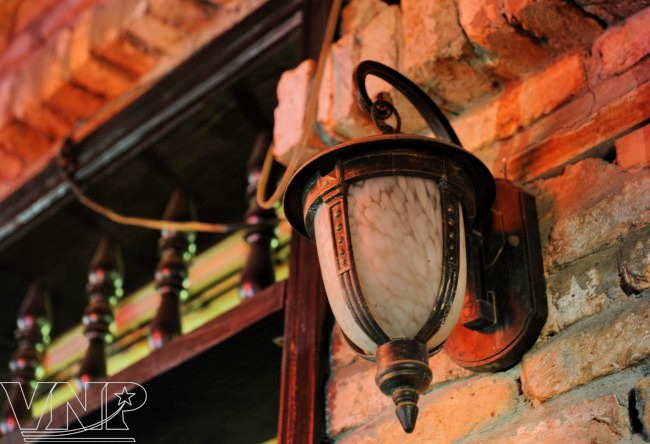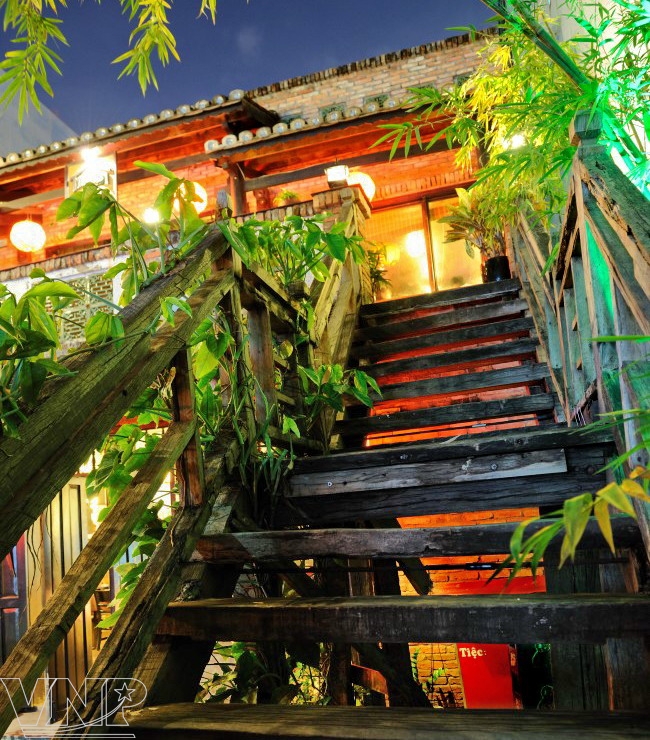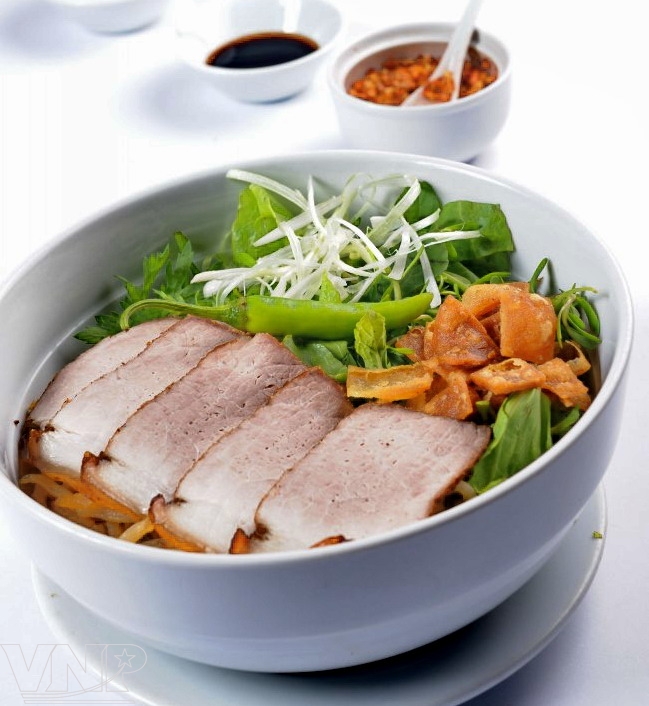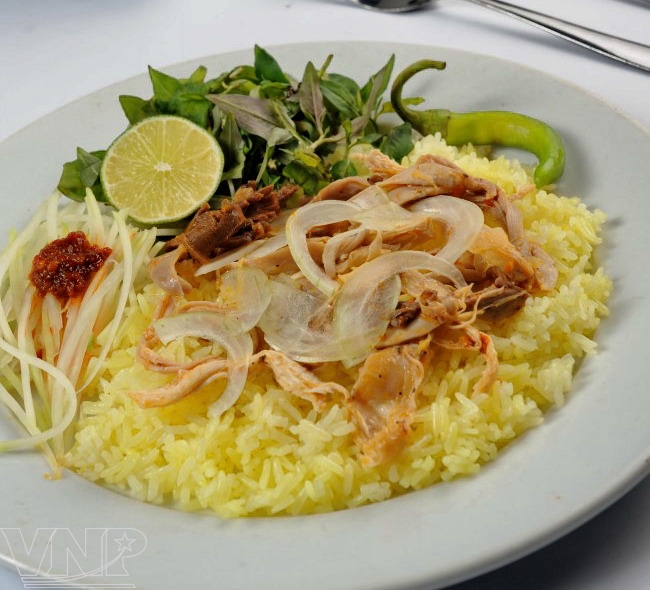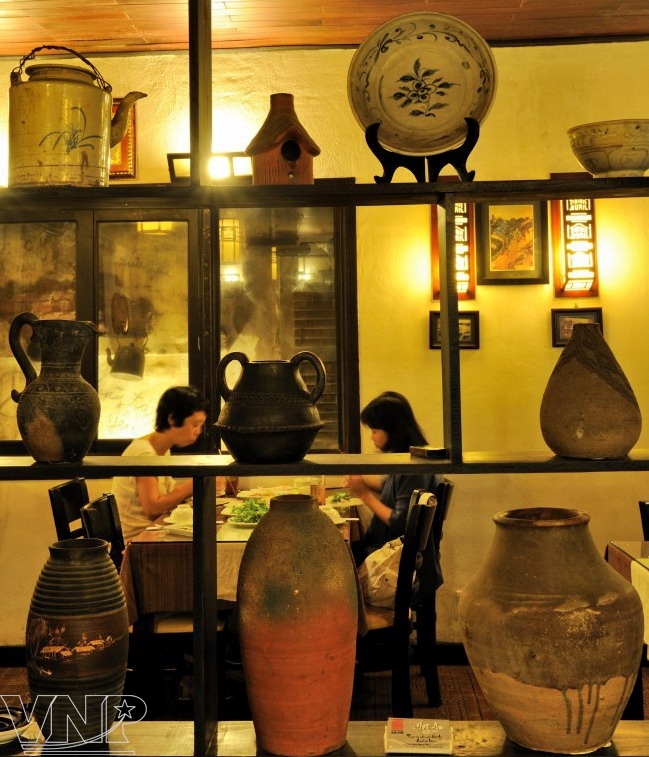
Later in the morning, it is time for green tea that is either served hot in tiny teacups or over ice cubes in huge glasses. Green tea is served together with coffee – this being a legacy of the country’s colonial period when the French ruled (For the coffee aficionados – find out more about coffee). Vietnamese coffee cannot be compared to what we know in the West; in fact, most of the espressi we know are like dishwater compared to this very strong drink. It’s served in tiny portions in glasses, it’s black, it’s thick, sweetened with heavy condensed milk, served hot or iced and it is very strong indeed.

Ah and, yes, the Vietnamese drink tea and coffee at the same time.
But, as we said, it means getting up early. Should you want to participate in this early morning ritual, we advise you to show up by 6 a.m. and no later than 8 a.m.
To combat that sinking feeling before lunch, people go to hawkers who are omnipresent and sell small eats and lots of fresh fruit served with salt and chilis. At 11 a.m., the first roadside food stalls will open up serving fried and grilled foods in all variations, also salads with fish and meat, served with the ubiquitous fresh herbs.
During the afternoon smalls eats are once again on the menu, accompanied by freshly squeezed fruit shakes.
The food at dinnertime is quite similar to the food served at lunch, only more opulent.
A particular feature of the going-out scene in Hanoi are micro-breweries, called bia hoi, which serve light, freshly brewed beer from small kegs, accompanied by peanuts and light menus.
In the countryside the food culture is different, of course. Proper family-size kitchens still exist. Most Vietnamese live in extended families, and one family member tends to be in charge of the cooking for everybody. These cooks work from tiny kitchens, shredding, boiling, grilling, doing the crackling, preparing an average of four to eight dishes that are served with rice. The food is served in pots that are set on the floor. Everybody eats from their personal rice bowl and serve themselves, using with chopsticks to pick food from the communal pots. There are no chairs or stools. The Vietnamese eat sitting in the lotus position which is a rather strenuous way of enjoying your food, at least for most Europeans.
Like all over Asia, the European tradition of having a meal consisting of various courses is unknown. Instead of eating a starter, a main dish, and a dessert, like we would normally do, the food here is turned out from the kitchen, eaten straightaway and in no particular order or sequence. Everybody will eat whatever they fancy.
After the “American War“ as the Vietnam War is called in Vietnam, the food supply situation continued to be tight into the 1980s and even early 1990s. Vietnamese cuisine was very different then to what it is now. People were concerned only with getting enough food on the table. Many Vietnamese specialities could simply not be prepared under such strained circumstances, and aside from malnutrition, there was a real threat that traditional food knowledge would get lost altogether.
Things only started to improve in the mid-1990s. Now, people finally had a chance to reflect back to their old food traditions. Vietnamese cuisine experienced a boom and once again came into its own.
These days Vietnamese cuisine is under a different threat. The problem of want has been solved. The problem of Westernized food ways has not. Vietnamese cuisine is, to put it very directly, in the danger of being dumbed down and conforming to the taste of the time. On the up side… only one fast food outlet has made its way to Vietnam so far: KFC.
The Vietnamese perfected the art of living through hard times. There is no waste in the kitchen; the Vietnamese know of a usage for every single food item. Chicken is a prime example. Oftentimes, in the West, chicken seems to consist of breast and legs only. In Vietnam, chicken broth is made from the bones, chicken feet are grilled to a crispy crackling, giblets are used for braising.
And isn’t this ”waste not want not” approach a very contemporary approach to food?
